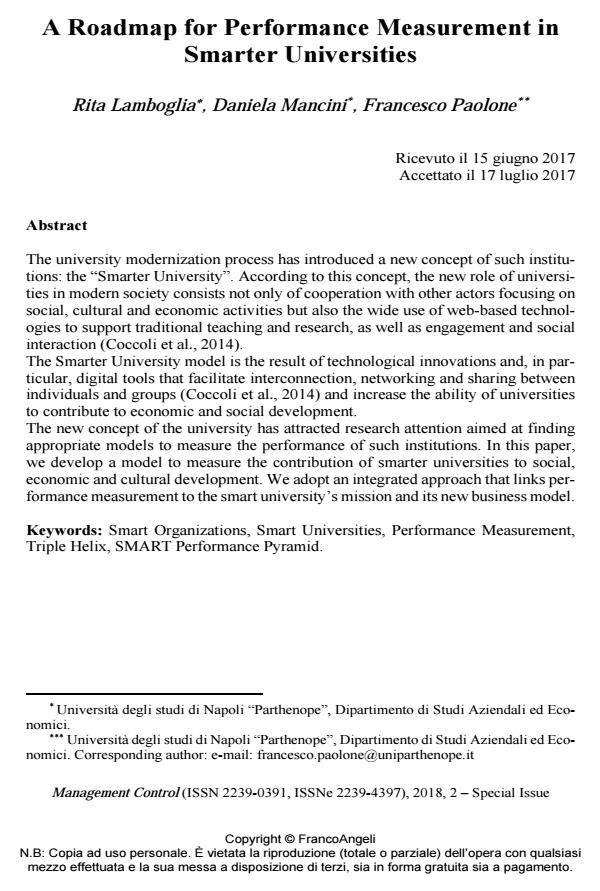A Roadmap for Performance Measurement in Smarter Universities
Titolo Rivista MANAGEMENT CONTROL
Autori/Curatori Rita Lamboglia, Daniela Mancini, Francesco Paolone
Anno di pubblicazione 2018 Fascicolo 2018/2 Suppl.
Lingua Inglese Numero pagine 21 P. 113-133 Dimensione file 313 KB
DOI 10.3280/MACO2018-SU2006
Il DOI è il codice a barre della proprietà intellettuale: per saperne di più
clicca qui
Qui sotto puoi vedere in anteprima la prima pagina di questo articolo.
Se questo articolo ti interessa, lo puoi acquistare (e scaricare in formato pdf) seguendo le facili indicazioni per acquistare il download credit. Acquista Download Credits per scaricare questo Articolo in formato PDF

FrancoAngeli è membro della Publishers International Linking Association, Inc (PILA)associazione indipendente e non profit per facilitare (attraverso i servizi tecnologici implementati da CrossRef.org) l’accesso degli studiosi ai contenuti digitali nelle pubblicazioni professionali e scientifiche
The university modernization process has introduced a new concept of such institutions: the "Smarter University". According to this concept, the new role of universities in modern society consists not only of cooperation with other actors focusing on social, cultural and economic activities but also the wide use of web-based technologies to support traditional teaching and research, as well as engagement and social interaction (Coccoli et al., 2014). The Smarter University model is the result of technological innovations and, in particular, digital tools that facilitate interconnection, networking and sharing be-tween individuals and groups (Coccoli et al., 2014) and increase the ability of uni-versities to contribute to economic and social development. The new concept of the university has attracted research attention aimed at finding appropriate models to measure the performance of such institutions. In this paper, we develop a model to measure the contribution of smarter universities to social, economic and cultural development. We adopt an integrated approach that links performance measurement to the smart university’s mission and its new business model.
Parole chiave:Smart Organizations, Smart Universities, Performance Measurement, Triple Helix, SMART Performance Pyramid
- Management Control System in Smart and Sustainable Firms Domenica Lavorato, pp.1 (ISBN:978-3-031-81435-8)
Rita Lamboglia, Daniela Mancini, Francesco Paolone, A Roadmap for Performance Measurement in Smarter Universities in "MANAGEMENT CONTROL" 2 Suppl./2018, pp 113-133, DOI: 10.3280/MACO2018-SU2006